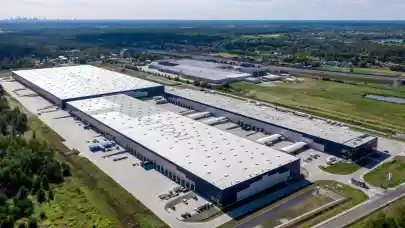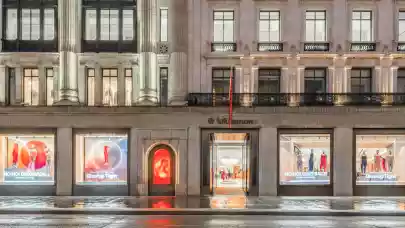
Recently, there has been significantly more activity in the Warsaw office market compared to regional markets, both in terms of demand and new investments. As of last year, the demand for office space in Warsaw has increased, while overall demand has decreased in the region. There are also more vacancies in the regional markets, says Walter Herz.
The demand for office space in Warsaw remains at a high and stable level. It has even been rising in recent months. It's worth noting that in terms of office market absorption, Warsaw ranks among the top European cities. In contrast, office demand in Poland's regional markets has declined compared to the previous year. Although office rents in major regional cities are nearly half the price of those in Warsaw, the vacancy rates in the regions are nearly twice as high as in the capital market.
The widespread optimization of workspace by companies is accompanied primarily by a demand for high-standard offices located in city centres. This is deepening the differences in office availability depending on location. Available office space is noticeably decreasing in central city areas, while it is increasing in areas farther from the city centres.
The national leasing structure shows an increase in lease renegotiations, which have recently dominated the Warsaw market. Through renegotiating, companies are seeking to avoid the costs associated with relocating and fitting out new spaces.
Office investments have stalled across Poland, with few new projects. Developers are analyzing the market's absorption capacity in relation to new supply. Beyond verifying actual demand for space in the context of hybrid work, the growth of office stock is being held back by land prices and the limited availability of centrally located plots, as well as higher costs of financing projects.
Developers are also being discouraged by lower investor activity in the transactional market. However, there are already signs of improvement in this area. This year, package deals have been recorded in the Warsaw office segment, while in the regions, prime properties have changed hands, indicating that investors are once again looking into office assets.
Regional demand down by several percent
In the first half of this year, total office demand in the eight largest cities outside Warsaw declined compared to the previous year, with just under 290 thousand sqm of contracted space. In the second quarter, agreements were signed for 146 thousand sqm, a result several per cent lower than in the same quarter of 2023.
Office demand in the regions comes primarily from companies in the IT and business services sectors, as well as manufacturing firms. The most dynamic rental markets are in Kraków, the Tricity, and Wrocław.
In Kraków, demand for office space grew by several per cent in the first half of this year compared to 2023. Tenants signed contracts for over 90 thousand sqm, making Kraków the regional leader, generating one-third of the total transaction volume in regional cities.
In Wrocław, 50 thousand sqm of offices were contracted, while in Tricity, 56 thousand sqm were leased. In Poznań, tenants leased over 30 thousand sqm of space, and in Katowice, 25 thousand sqm
In the regions, nearly 18 per cent of office space is available for immediate lease, while in Warsaw, the vacancy rate is just over 10 per cent. Relatively large office availability is in Kraków and Katowice, where over 20 per cent of space is awaiting tenants, and in Łódź, even over 23 per cent. In Wrocław, 18 per cent of offices are vacant, 12 per cent in the Tricity, and 14 per cent in Poznań.
Warsaw thrives on renegotiations
Office demand in Warsaw in the first half of 2024 was similar to last year in terms of both contracted space and the number of agreements, indicating market stabilization. By mid-year, contracts were signed for approximately 320 thousand sqm of offices, mostly outside the city centre. In the second quarter of this year, demand for office space in the capital was about 30 per cent higher than in the previous three months and also higher than the volume in the same quarter of the previous year.
The most active sectors renting office space in Warsaw are banking, manufacturing, media groups, as well as IT and business services companies. Institutional tenants and state entities are also more active due to unlocking decisions following the change of government. State-owned companies and public institutions are further facilitated by the increasingly common option of paying rent in Polish zloty, offered by building owners.
In Warsaw, lease renegotiations have begun to dominate, with their share regularly increasing in recent times. In the second quarter of this year, renegotiations clearly dominated the leasing structure, driven by the high costs of finishing and furnishing new spaces.
Office construction slows down by three quarters compared to pre-pandemic levels
The growth of new office supply in Poland now exceeds just over a quarter of what was recorded before the pandemic. In the nine largest cities in Poland (Warsaw, Kraków, Wrocław, the Tricity, Katowice, Poznań, Łódź, Lublin, and Szczecin), less than 500 thousand sqm of office space is under construction. For comparison, five years ago, 1.9 million sqm of offices were being built in the country.
New projects have almost entirely halted in regional markets. In the first half of this year, construction began on one project in Wrocław, which will offer a few thousand sqm of offices.
In Warsaw, the construction or modernization of over 90 thousand sq m of office space in six buildings started during the same period. Overall, approximately 280 thousand sqm of offices are under construction in the capital. New office buildings are mainly rising in the city centre (90 per cent of the new space), reflecting strategic adjustments to the current preferences of tenants and company employees.
Projects such as The Bridge (47 thousand sqm), Upper One (36 thousand sqm), Skyliner II (24 thousand sqm), Office House (31 thousand sqm), Warta Tower (30 thousand sqm), The Form (30 thousand sqm) CD Projekt HQ, Studio II and Vena (15,4 thousand sqm), as well as V Tower (33,7 thousand sqm), G5 Prime Offices (11 thousand sqm), Lakeside II (18 thousand sqm), former UBC II (after modernization) and others will add to Warsaw's office stock after their construction is completed.
The office projects being initiated now are significantly smaller in size compared to those built a few years ago. Additionally, on the Warsaw market, we are seeing an increasing number of conversions of old office buildings, primarily into residential projects, PRS (Private Rented Sector), or student housing.
In the regions, the most construction is taking place in Kraków and Katowice
In regional cities, approximately 190 thousand sqm of office space is currently under construction, with the largest developments taking place in Kraków, Katowice, Poznań, and Wrocław. Nearly 70 thousand sqm of office space under construction in Kraków gives it the top spot among regional cities. Katowice follows in second place, with 60 thousand sqm under development. The largest projects in the Katowice agglomeration are Grundmanna Office Park (21 thousand sqm) and Eco City Katowice (18 thousand sqm).
In Poznań, around 58 thousand sqm of office space is under construction, including the AND2 building (40 thousand sqm). In Wrocław, three office projects are under development, totaling approximately 40 thousand sqm In the Tricity area, 36 thousand sqm of office space is under construction.
In the first half of the year, developers in Poland delivered just under 130 thousand square meters of new office space. This new supply was almost equally divided between Warsaw and the largest regional markets. The leading regional markets in terms of new supply were Wrocław and Kraków. Wrocław dominated the other regions, accounting for more than half of the space delivered outside of Warsaw (32 thousand sqm).
In Warsaw, new office buildings completed this year include Lixa D and E, and Vibe I. In Wrocław, Quorum Office Park A (16,8 thousand sqm) and B10 were completed, while in Kraków, Brain Park C (13 thousand sqm) was finished.



